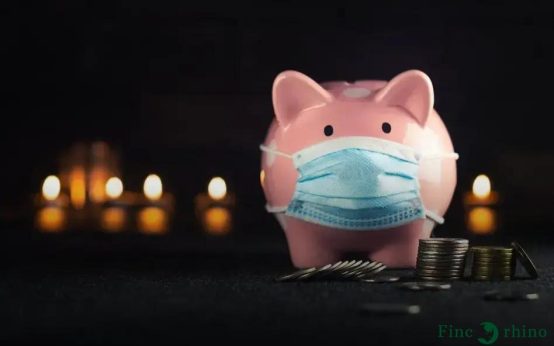Interested in learning how to flip websites for profit? This guide breaks down everything you need to know to get started. You can turn a simple digital property into a lucrative income source with the right strategies. Whether you’re a beginner or have some experience, understanding the process, identifying niches, and enhancing website value is crucial. Let’s dive into the essential steps of flipping websites, from purchasing to selling at a higher price, and see how you can succeed in this exciting venture.
Understanding the Website Flipping Process
Website flipping is akin to real estate flipping but in the digital world. The process involves buying an underperforming website, making strategic improvements, and then selling it for a profit. To effectively engage in website flipping, one must first master the key steps involved in the process.
The first major step in website flipping is acquiring a website. This means searching on marketplaces like Flippa or brokerage sites where websites are bought and sold. It’s critical to analyze various aspects such as the site’s current traffic, backlink profile, revenue reports, and the niche it operates in.
Once you’ve acquired a site, the next step is to enhance its value. This might include improving the site’s SEO, increasing its traffic through targeted marketing, and enhancing content quality. Conduct a thorough audit to identify areas needing improvement, whether that’s optimizing page load speeds, redesigning the UI/UX for better engagement, or monetizing more effectively.
The final part of the process is selling the site. Position the website attractively to potential buyers by demonstrating growth in traffic and revenue. Craft a compelling listing that highlights the growth potential, stability, and strengths of the site. Always be transparent with potential buyers by sharing insights and analytics as trust is crucial in these transactions.
Identifying Profitable Niches

One of the most crucial steps in flipping websites successfully is identifying profitable niches. A niche is essentially a specialized segment of the market, defined by its own unique needs and preferences. Recognizing a profitable niche can significantly impact the monetary potential of a flipped website.
Start by researching popular trends and domains that are currently in demand. Use tools like Google Trends to gauge the popularity of certain topics over time. Look for niches that exhibit steady growth, rather than those experiencing a temporary spike.
Explore niche-related forums, social media platforms, and online communities to gain insights into consumer needs and gaps in the market. An ideal niche should have limited competition, yet show potential for sustainable traffic and revenue.
If you find a niche with products or services people buy regularly, it’s worth exploring its monetization potential. Consider affiliate programs, advertising opportunities, or even digital products that can be sold on your website.
Additionally, assess the audience size of your chosen niche. A niche that is too broad might be difficult to rank for, while one that is too narrow could limit your growth. Strive for a balance, enabling both visibility and scalability.
Competitor analysis is also key in this phase. What are other sites in your prospective niche doing? By understanding their strategies, you can identify what’s working and what can be improved upon to differentiate your offering.
Finally, it’s vital to ensure you’re passionate about the niche you choose. Although flipping sites is a business venture, having genuine interest in the niche can boost your motivation and creativity, ultimately leading to higher quality content and engagement.
Key Steps to Increase Website Value
Enhance Website Design and Usability: Start by improving the visual appeal and ease of navigation on your website. A clean, intuitive layout increases user engagement and retention. Focus on optimizing page loading speeds and ensuring the site is mobile-friendly, as these factors significantly impact user experience and value.
Boost Content and SEO Strategically: High-quality, relevant content not only attracts traffic but also establishes authority in your niche. Implement effective SEO practices such as keyword optimization and backlink building to improve search engine rankings.
Monetization and Revenue Streams: Evaluate current monetization methods and explore additional options to enhance profitability. This could include affiliate links, ad placements, or even an e-commerce component. Diversifying revenue streams makes the website more attractive to potential buyers.
Build a Strong Brand Presence: A recognized brand increases perceived value. Strengthen your website’s brand by maintaining a consistent tone, style, and messaging across all content and social media platforms. Engage actively with your audience to build loyalty and boost traffic.
Gather and Analyze Data for Valuable Insights: Regularly monitor and analyze website analytics to understand user behavior, identify successful elements, and pinpoint areas for improvement. Data-driven changes can significantly enhance the website’s appeal and efficiency.
Marketing and Selling Your Flipped Website

Once you have successfully increased the value of your website, the next step is to market and sell it to potential buyers. Effective marketing is crucial to attract interested parties who will see the worth in your flipped website. Start by listing your website on popular website marketplaces such as Flippa, Empire Flippers, and Motion Invest. Ensure your listing is comprehensive and includes critical data like traffic statistics, revenue streams, and other attractive features.
Highlight the Value of your website in the listing description. Clearly present the growth potential and any unique aspects of your website that set it apart from others. Include
visuals
such as screenshots of analytics, income reports, and even testimonials from your current users or clients. Make it easier for potential buyers to envision the continued success of the website.
Establishing credibility is essential when selling your website. Be transparent about the operational aspects and be ready to show proof for every claim you make about the website’s performance. Utilize social media and online forums to promote your listing further to a broader audience.
Finally, consider engaging the services of a broker if you are looking for a more personal touch or have little experience in selling websites. Brokers can offer valuable advice and insights into the current market, as well as negotiate sales on your behalf. By effectively marketing and positioning your flipped website, you can attract the right buyers and maximize your profit.





